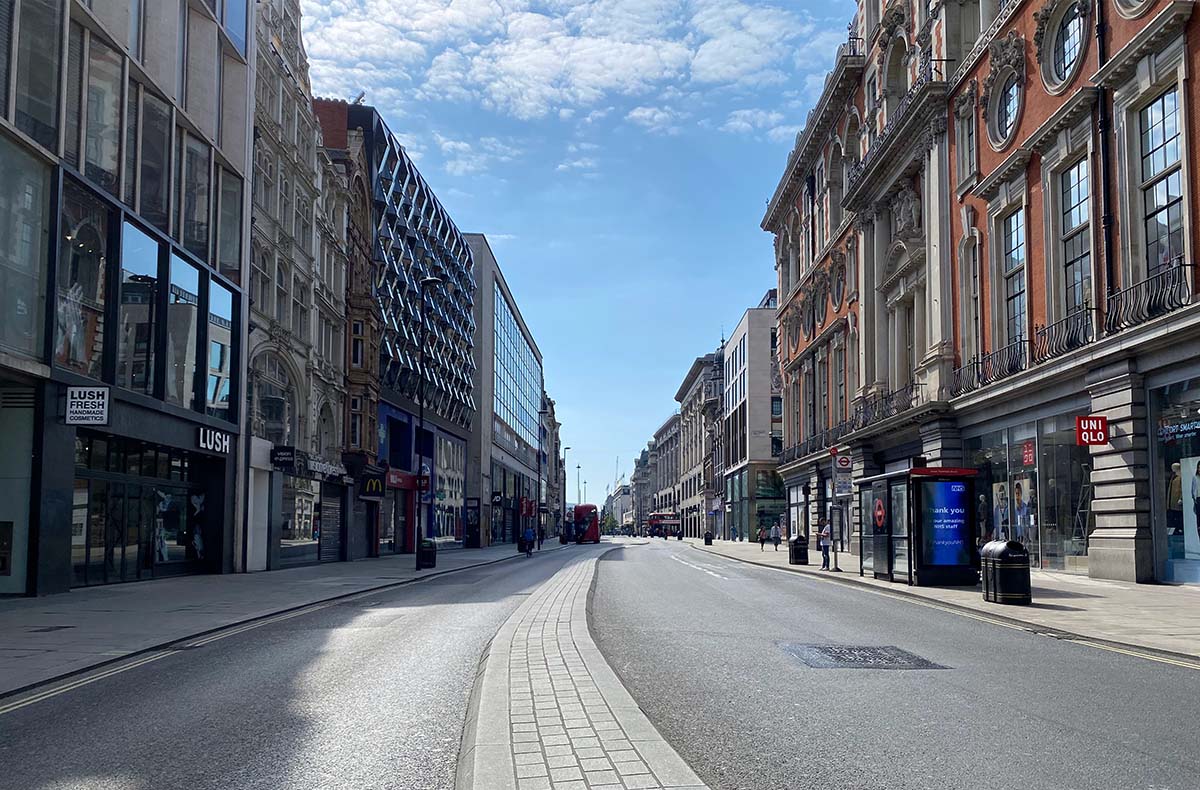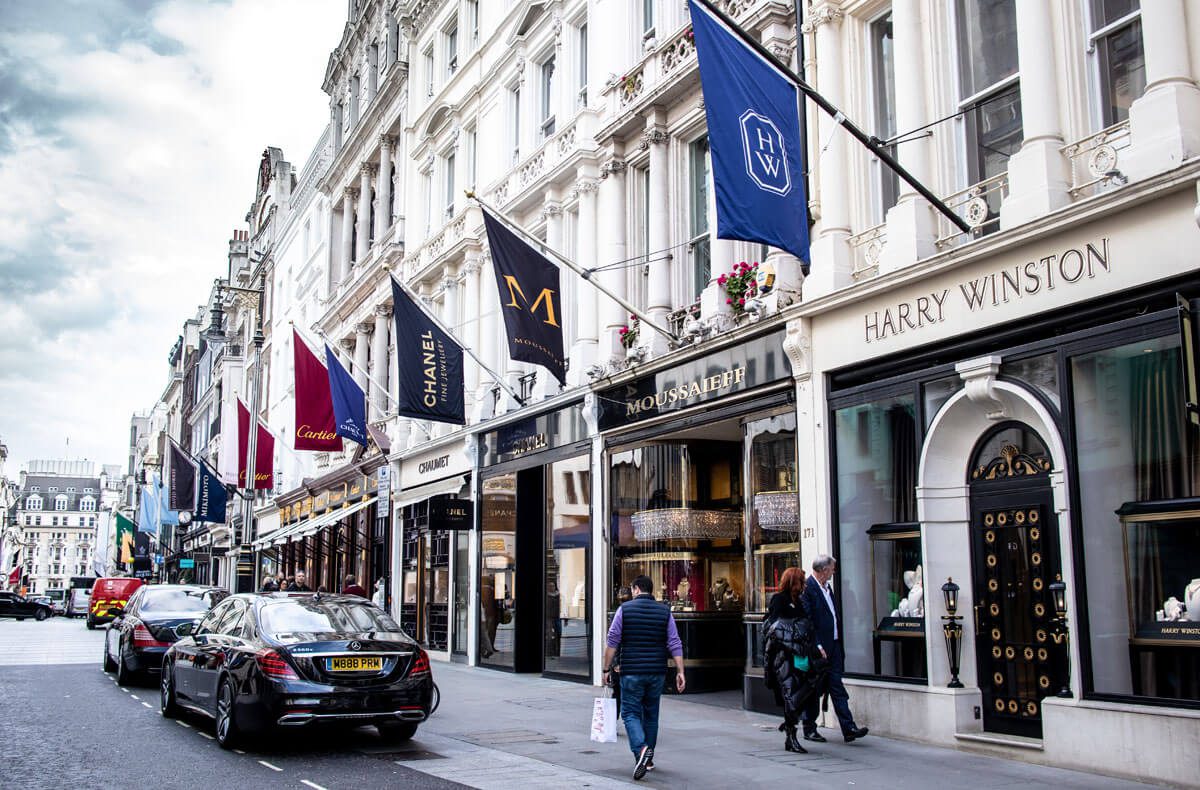
The busiest shopping street in Europe is looking as gappy as a seven-year-old’s smile.
While the American candy shops springing up on London’s Oxford Street have been much maligned, they are simply filling the retail cavities left by online’s growth and the COVID pandemic. While Oxford Street is putting on a brave face, it is a very noticeable difference and not an attractive sight. Many other blocks are either empty or under development.
London’s “High Street,” Oxford Street, was once chock full of department stores and global flagships. Running west to east, bookended by two giant Primarks, the stretch known as Oxford Street is 1.2 miles long from Marble Arch to Tottenham Court Road. Often called “the West End,” it is famously brimming with shoppers and has the capacity for around 300 shops, and welcomes visitors counted in the tens of millions each year.
It has taken the biggest knock of all UK high streets; footfall is still 52% lower than pre-pandemic levels, making it the worst-hit high street across the UK. Around 1.15m people visited Oxford Street in April 2022, compared to 2.41m in April 2019.
Even pre-pandemic, Oxford Street was becoming stagnant with a repetitive mix of Next, GAP, and Zara stores along its length. This downturn in the street’s history is an opportunity for something radical, and it is worth looking back on for inspiration.
Many of the great department stores—some still existing, others gone—started as single units that steadily bought up those around them as they expanded, an architectural statement of their retail successes. Apart from Selfridges, which arrived fully formed, brands such as John Lewis, DH Evans and Debenhams made Oxford Street their home, starting with a single store, swallowing neighbors and rivals to become part of retail history and what we know of today as a traditional department store. A new book, London’s Lost Department Stores by Tessa Boase, looks back at the comings and goings of an incredible fifty of London’s closed department stores, their origins and history, the significant architectural legacy that remains, and how they changed our retail landscape.
To work backward is to reverse this trend and break the large stores and blocks back into smaller units. While managing lots of smaller units with different retailers is much more work for landlords, it provides more variety for shoppers and is a lot less noticeable when units are empty. Landlords prefer to lease a whole block with a smaller turnover of clients, but are there any brands left to take these big stores whole?
Many of the upper floors of stores on Oxford Street are being converted into offices already. Almost 1 million sq ft of shop space will be converted to offices over the next five years. Europe’s premier shopping destination “is on the brink of a generational change,” according to agents Savills. It says a total of 1.32 million sq ft of new office schemes are scheduled for delivery in the next five years, with about three-quarters of that coming from former retail space. But it still leaves the ground floors for retail.
It’s time to think small. London still has a visible Georgian retail history of arcades or glass-roofed passageways lined with smaller shops. Many department stores added covered arcades to their buildings well into the 20th century to add interest and also increase the amount of product they could display in windows. Before web browsing, window shopping was once a pastime!
One of London’s most famous and popular arcades is Mayfair’s Burlington Arcade. It recently announced full capacity with the addition of 12 new brands, including The Royal Mint, SWAINE, and Merchants on Long. This beautiful strip of Georgian retail, running from Piccadilly to Burlington Gardens, houses 47 tenants and is built on a human scale.
More windows than shops, they are the physical equivalent of a homepage. The precursor to modern shopping centers, it still thrives over 200 years later and is worth looking at this idea for inspiration. These smaller stores allow brands with shallower pockets an opportunity to test the market while giving shoppers 47 retailers in the space of 196 yards. This is how people like to shop; lots of choices and quickly.
It is worth noting the controversial redevelopment of Marks & Spencer’s flagship Marble Arch store on Oxford Street sees the proposal of a pedestrian arcade behind the main thoroughfare. Westminster Council could rethink its shelving of pedestrianizing the western end of the street. Removing cars would give it more of a feeling of an arcade—albeit a large, outdoor one.
If the shoppers aren’t heading to Oxford Street, where are they going? Shaftesbury, the owner of neighboring Soho, Carnaby Street, and Chinatown, has hailed a “rapid rebound” in West End economy. They said London’s iconic West End had enjoyed a “strong recovery” in footfall and spending following the end of lockdowns as deep-pocketed shoppers flocked back to physical stores. Average monthly sales for its retailers are now reportedly 6 percent ahead of pre-pandemic levels from 2019.
These areas are predominantly single, smaller units of stores. People are voting with their feet, shunning Oxford Street for these neighboring areas with more variety, entertainment, hospitality, and a more exciting, independent touch to retail. It’s also depressing to see lots of boarded-up and empty stores.
Oxford Street could hope to win them back by offering entertainment. More Piccadilly Circus than department store graveyard, new concepts just opened include the Twist Museum, “home to thrilling, interactive exhibits that explore how illusions work” and XP Factory—the entertainment company formerly known as Escape Hunt—has opened a flagship site, hosting both the Boom and Escape Hunt formats with activities such as augmented reality ax throwing, augmented reality darts, shuffleboard, karaoke, crazier golf, and large screens showing selected live sports events.
A PR disaster of a grassed-over mound aside, Oxford Street will bounce back. The UK government has just announced changes in business rates from April 2023. The yearly rateable value of Selfridges’ store in Oxford Street, London, is estimated to almost halve from £30.5mn to £16.8mn. Plus, business rates discount for smaller retailers was increased from 50 percent to 75 percent and extended for a year.
The giant, new Elizabeth Line, running underneath Oxford Street, just welcomed its 70th million customers in six months. The Elizabeth Line has brought an extra 1.5 million people to within 45 minutes of central London, and is estimated it will carry 200 million passengers per year. Now, they just need something attractive to get them in more often, keep them there and spend.
Oxford Street will never be the same again and that could be a good thing. It’s not going anywhere. New offices above will shrink bloated store footprints and bring people, while the ground floors need as much variety as possible if they are to compete with London’s other shopping meccas and online. Oxford Street has an opportunity to go small or go home.



